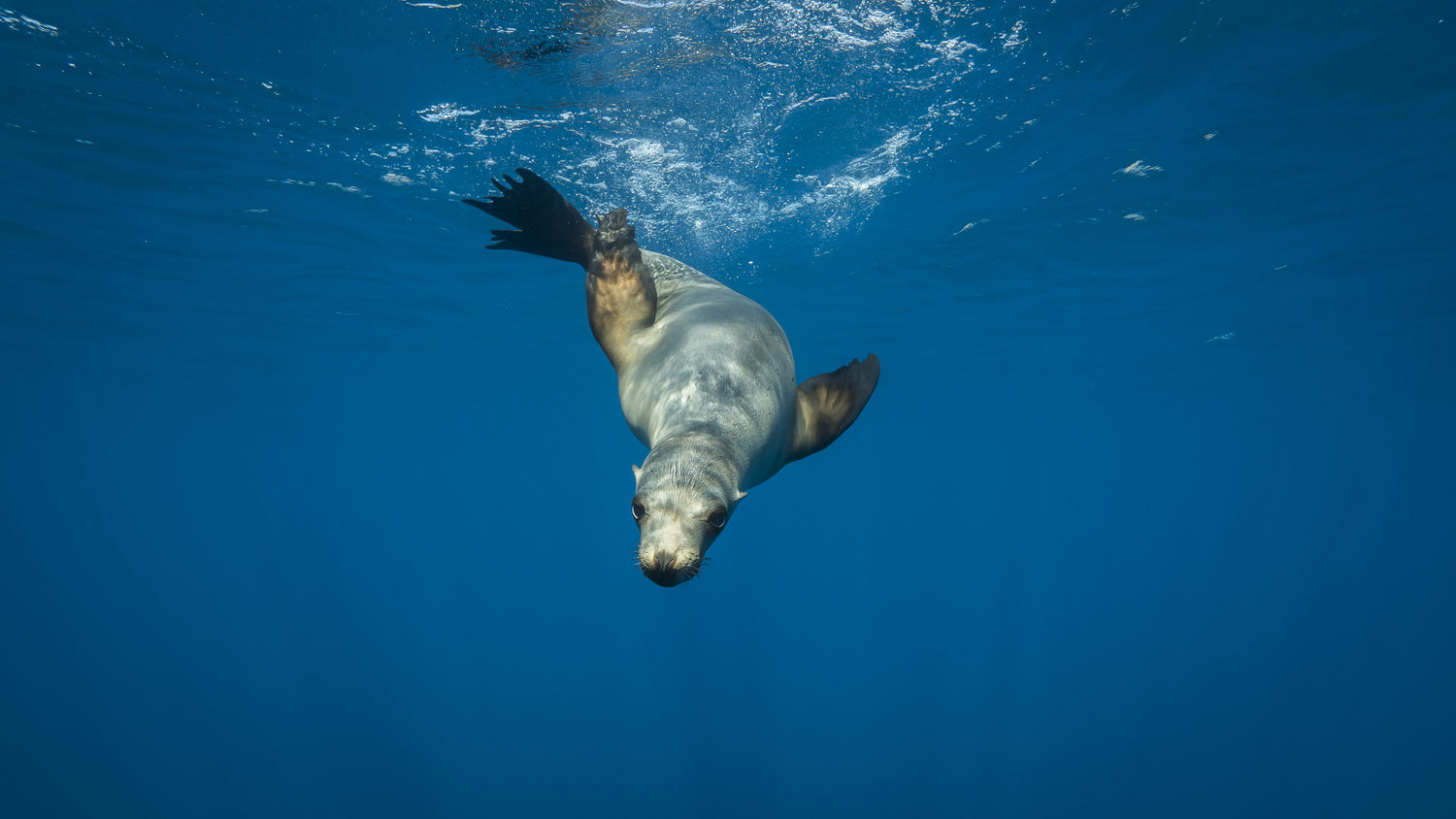Ecological Monitoring - protocols and techniques
Research and monitoring
- Last updated | 14 December 2023
Ecological monitoring, in its simplest sense, involves a systematic collection of ecological data in a standardized manner over time (preferably at regular intervals) for a particular reason [1]. When applied to marine mammal conservation in an MPA, ecological monitoring involves the collection of data that can contribute to research into the health of marine mammal populations, the ecological processes necessary for the maintenance of the marine mammal populations, and the threatening processes that impact marine mammals. Given the cost and expertise required to apply a variety of monitoring methodologies, it is likely that the MPA management will need to partner with other organisations to achieve these aims.

Monitoring of marine mammal populations is integral to the reporting and reviewing the management effectiveness of an MPA (see Factsheet 21). The specific goals of a monitoring programme will vary depending on the characteristics of the MPA. Data from a well-designed monitoring programme should, however, reflect the state of marine mammal populations, and indicate whether management is meeting its objectives [2].
Marine mammals can be indicators of overall ecosystem health. Changes in seal, dolphin and whale populations may reflect changes further down the food chain, changes to climate, and pollution [3].
Additional baseline data and general ecological information on marine mammals can be collected through a motoring regime. Given the difficulty, expense and time-consuming nature of marine mammal surveys, ongoing monitoring programmes are likely to provide previously unknown marine mammal information within an MPA.
The particular monitoring methods employed within an MPA will depend on the scope of the monitoring programme, which in turn depends on the critical questions that need to be answered. The techniques used to monitor cetaceans within an MPA will be driven the size of the MPA, the species present, and available human resources and budget [4].
All methods of monitoring marine mammals have their strengths and limitations. Given the limited (or insufficient) resources of most MPAs, and the difficulty of monitoring large and often wide-ranging animals, cost-effective strategies that utilise local people and MPA users can form an important component.
Some of the more cost-effective methods, though less rigorous, include recording incidental sightings from MPA users and stranding data. This data, though providing some indication of the species found in an area, generally cannot be used for quantitative analyses such as measuring population size [4].
Data collection from tourism operators, as well as citizen science can provide robust data, depending on the species and cost. Citizen science and ecotourism data collection are increasingly used in monitoring, and MPA managers can encourage this. One example is the site Happy Whale, where citizens are encouraged to upload images of whale flukes (tails) to a database, they are identified by their unique markings, and they then can be tracked around the world [5].
Other, more specialised methods will depend on the species, the research goals, and the available resources. These include passive acoustic monitoring, which is particularly useful in monitoring highly-vocal species of cetacean. Observational monitoring from land, sea, or aircraft, and Photo ID may all form a part of the monitoring mix. Satellite tagging is now, especially given the large distances travelled by the larger whales, a widely recognised method of monitoring cetaceans [6].
MPA managers, however, will likely not have the human or budget resources to run all elements of ecological monitoring. Existing scientific institutions are usually brought in as partners to help to design and fund monitoring programmes, and indeed to help define the major issues in the planning phase [2].
Numerous long-term monitoring projects take place within the sanctuary involving a variety of partners, including scientists from multiple agencies, universities, indigenous groups, citizen science groups and others.
A range of techniques are used, depending on the specific goal of the monitoring project. Oceanographic parameters are collected for a number of projects using buoy monitoring arrays.
Sea otters are censused annually using aerial and ground counts. Pinnipeds are monitored using visual line-transect surveys, visual strip surveys, molecular techniques, digital photography, aerial surveys at haulout sites and satellite tagging.
Cetaceans are monitored using passive acoustic recording, ship-based offshore cetacean surveys (visual surveys following line-transect protocols), photo identification catalogues, and satellite tagging.
> Olympic Coast National Marine Sanctuary: Science
> Olympic Coast Monitoring Inventory
[1] PDF: Monitoring Ecological Change, Second Edition
[2] PDF: Kelleher, G. (1999). Guidelines for Marine Protected Areas. IUCN, Gland, Switzerland and Cambridge, UK. xxiv +107pp
[3] PDF: Marine mammals as indicators of change
[4] PDF: Franzosini, C., Genov, T., Tempesta, M., 2013. Cetacean manual for MPA managers. ACCOBAMS, MedPAN and UNEP/MAP-RAC/SPA. Ed. RAC/SPA, Tunis. 77 pp.
[5] Web page: Photographing Whales for Science
If you would like to get in contact with us, please use the button below.
Copyright 2022 © All rights Reserved. Design by piknetart.com